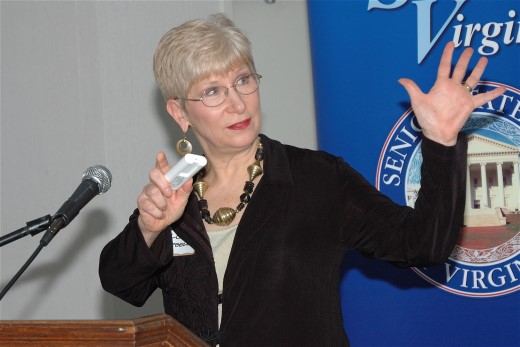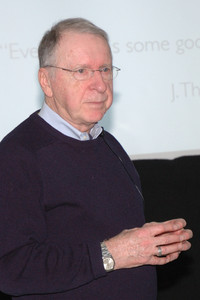Aging in Community – Action 2020: Celebration and Looking Ahead
Saturday, February 14th, 2015Over ten years have passed since the groundbreaking 2020 Plan: Aging in Community was finalized. Action 2020 is an initiative to create a challenging, but doable, 5-year action plan to achieve the goals of the 2020 Plan. Ms. Billie Campbell spoke at the Wednesday, February 11, 2015 meeting of the Senior Statesmen of Virginia. The program was moderated by SSV Past President Sue Liberman. Listen to the podcast.
[display_podcast]

Billie Campbell is the senior program manager for theThomas Jefferson Planning District Commission (TJPDC) and executive director of TJPDC Corporation, TJPDC’s companion nonprofit. She has been with the TJPDC since 1999, when she changed careers from structural engineering. She has a wide-ranging role at the TJPDC, managing a variety of projects, heading TJPDC’s housing program, and carrying out management and administrative functions for the regional agency. She has been actively involved in efforts to make our region age-friendly. She has been a leader in the Livable for a Lifetime (L4L) initiative since its inception in 2006 to promote amenities for ease, comfort and hospitality in homes and communities, and is a member of the Chamber’s Aging in Place Business Round Table. She holds a Master of Public Administration from George Mason University.
Program Summary
Over ten years have passed since the groundbreaking 2020 Plan: Aging in Community was finalized. Action 2020 is an initiative to create a challenging, but doable, 5-year action plan (2015 to 2020) to achieve the goals of the 2020 plan. The plan was created between 2000 and 2003. JABA was the leader of that effort and involved over 500 people and 85 organizations. This was one of the few communities in the country to develop a plan on aging that early. The plan is 97 pages in length and is a guide for this community to be age friendly. The earlier plan called on promoting “universal design application” which is a home and community design method where you design objects that are easy to use for the widest number of people regardless of their ability without real adjustment or adaptation. Subsequently, the term “universal” design has been mistakenly interpreted to mean “specialized” design and so we have changed our terminology to better convey a concept that makes things easier for everybody: we talk about amenities for ease, comfort and things that are for hospitality. At the end of the presentation, Ms. Campbell took questions and also solicited ideas and suggestions of things we might want to include in the plan about things you know about.

 This session was focused on learning how to identify and overcome the gaps between different points of view in public and private discourse. It was facilitated by Dr. Grant Tate, CEO/Managing Partner of
This session was focused on learning how to identify and overcome the gaps between different points of view in public and private discourse. It was facilitated by Dr. Grant Tate, CEO/Managing Partner of